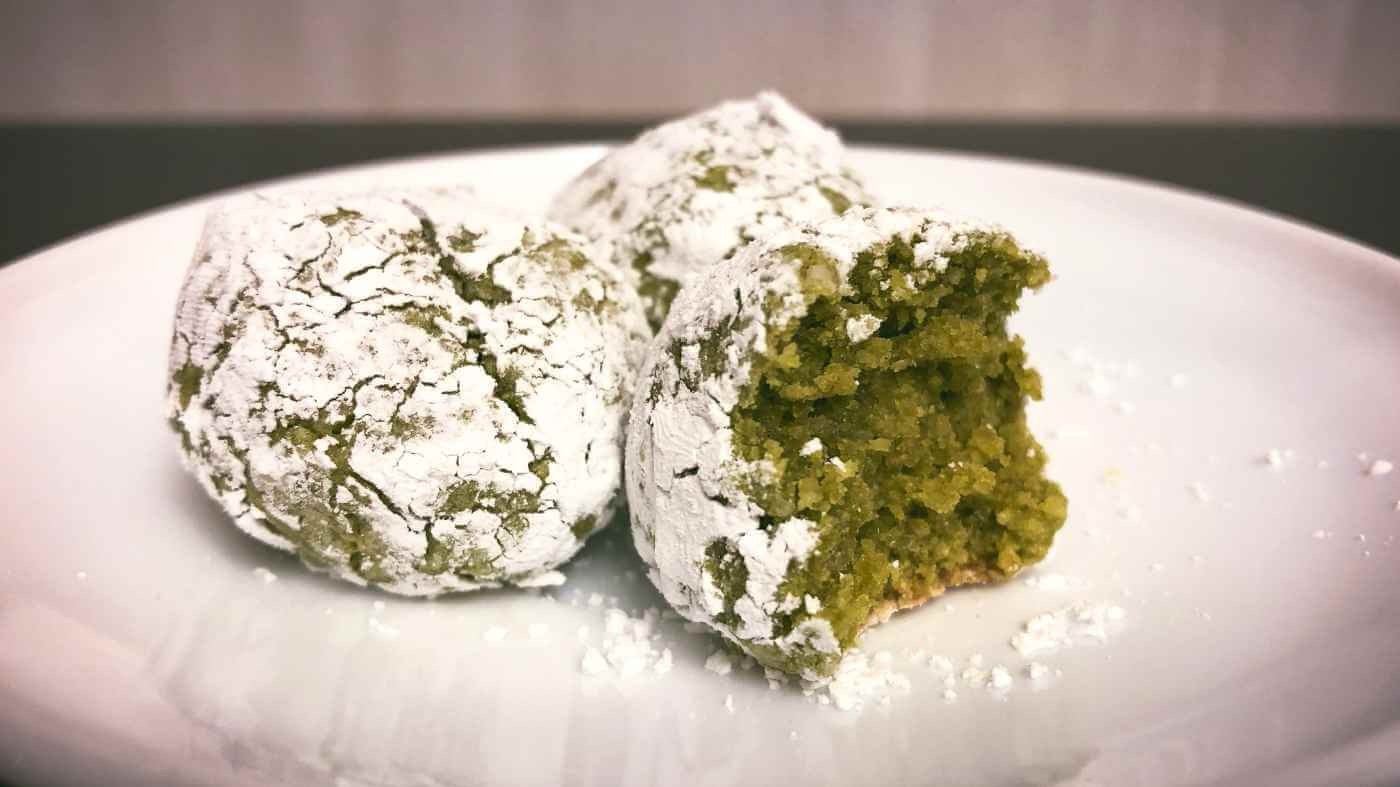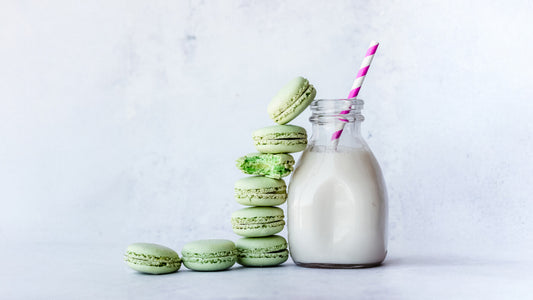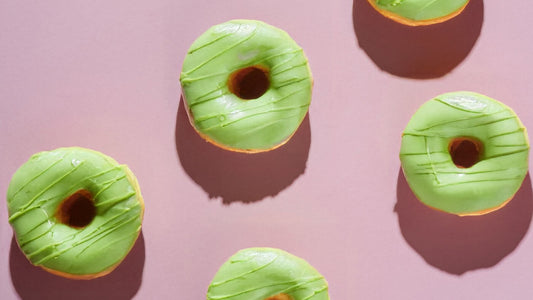What is in These Matcha Mochi Cookies?
As You're making these matcha mochi cookies, you may be wondering what mochi is exactly. Let's take a brief moment to explain this special Japanese treat!
What is Mochi
Mochi is a traditional Japanese food made from glutinous rice, which is also known as sticky or sweet rice. It has a distinctive chewy and slightly elastic texture that sets it apart from regular rice.
Mochi is a versatile ingredient used in both sweet and savory dishes (like these matcha mochi cookies), and it plays a significant role in Japanese cuisine and culture.
Sweets are often consumed alongside Japanese green tea, especially during the Japanese tea ceremony. If you want to learn more about the tea ceremony and it's significance, we have the perfect article for you 👉 Japanese tea ceremony: Description, History, & Facts
How is Mochi Made?
The process of making the mochi used in these matcha mochi cookies involves soaking glutinous rice, steaming or cooking it, and then pounding or mashing it until it becomes a sticky and pliable mass. This process develops the unique chewy consistency that mochi is known for.
Mochi can be molded, shaped, or cut into various forms, and it's often used in traditional sweets, desserts, and even in modern fusion recipes like these matcha mochi cookies.
By the way, if you like the taste of mochi, you may really enjoy this recipe 👉 The Sweet and Chewy Delight of Green Tea Mochi
When is Mochi Used?
Mochi is a popular ingredient in Japanese festivals and celebrations, where it's often enjoyed in its various forms, such as in mochi ice cream, matcha mochi cookies, mochi-filled pastries, or simply dusted with kinako (soybean flour) or matcha (green tea powder).
It's important to note that due to its chewiness, mochi should be consumed carefully, especially by those who might have difficulty chewing or swallowing dense foods.
How to Improve these Matcha Mochi Cookies
These matcha mochi cookies are already delicious, but there are a few ways this recipe can be improved. Let's explore a few ways you can personalize this recipe and make it your own!
Add Nutty Crunch
Incorporate chopped nuts like pistachios or almonds into the cookie dough. The nutty texture and flavor will contrast beautifully with the chewy mochi and bring an exciting element to each bite of the matcha mochi cookies.
You might also want to play around with other types of matcha cookies. Here is another recipe we really like 👉 The Best Matcha Cookies You’ll Ever Eat!
Enhance Citrus Zest
Grate the zest of an orange or lemon into the cookie dough for a burst of refreshing citrus aroma and taste. The citrus notes will complement the matcha and chocolate chips, adding brightness to the matcha mochi cookies.
Infuse Floral Essence
Introduce floral flavors with a touch of rosewater or lavender extract. These delicate aromatics will provide an elegant and aromatic dimension to the matcha mochi cookies, elevating them to a sophisticated treat.
If you like this floral matcha pairing, you might really like our lavender matcha latte recipe 👉 Serenity in a Cup: Lavender Matcha Latte Recipe
Coconut Coating
Roll the mochi-wrapped cookie dough balls in shredded coconut before baking. The coconut's tropical sweetness will enhance the mochi's chewiness and offer a delightful contrast to the rich matcha and chocolate.
Double Chocolate Twist
Use both dark and white chocolate chips for a dual chocolate experience. The combination of rich dark chocolate and creamy white chocolate will create a harmonious blend with the matcha and mochi.
If you want to add a tea infused chocolate, we recommend this recipe 👉 The Ultimate Genmaicha Chocolate Recipe
Glaze with Matcha Drizzle
Create a matcha glaze by mixing powdered sugar with a touch of matcha and water. Drizzle the glaze over the cooled matcha mochi cookies for an artistic touch that highlights the matcha flavor and adds a touch of sweetness.





